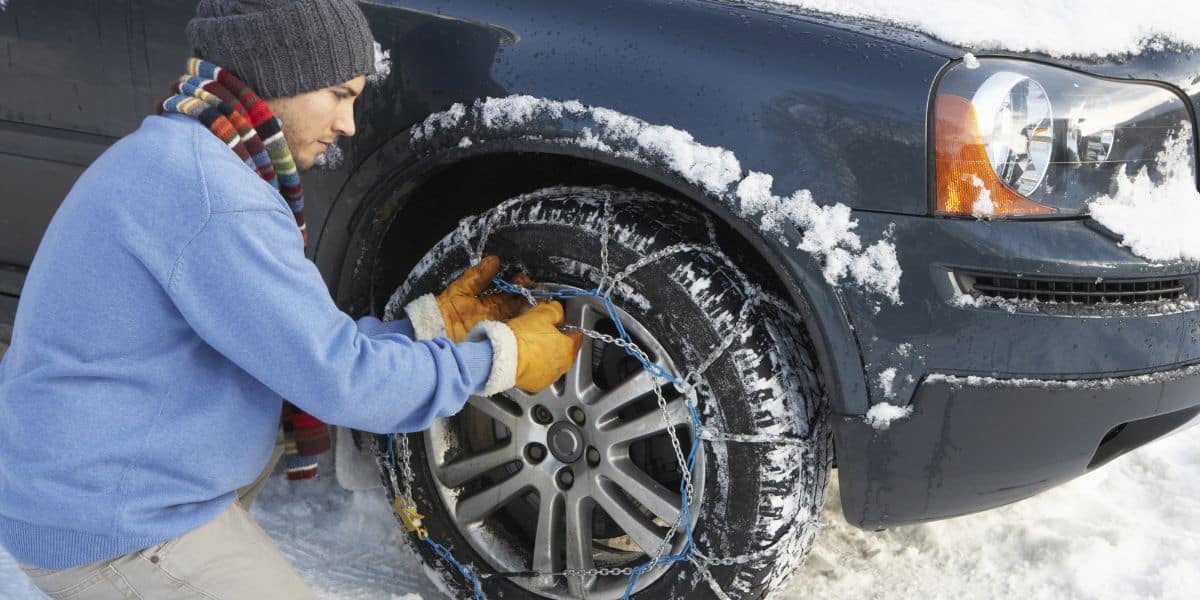When winter arrives, it transforms the landscape into a beautiful white wonderland. However, along with its beauty comes the challenge of driving on icy, snowy roads. For many drivers, maintaining safety during these conditions often involves a crucial accessory: snow chains. This comprehensive guide will make the complexities of snow chains much simpler, detailing their importance, proper usage, and practical tips for installation and maintenance. So let’s dive into the world of snow chains to ensure you stay safe while navigating winter roads.
Understanding Snow Chains
Snow chains are devices that fit over the tires of your vehicle to enhance traction and grip. They are especially beneficial on icy or snowy surfaces where traditional tires struggle to maintain control. The core purpose of snow chains is to dig into the road to provide extra bite, allowing vehicles to maneuver more effectively through hazardous conditions.
There are several types of snow chains available, including link chains, which are typically made of metal, and more modern alternatives like textile chains, which are made from synthetic materials. Each type has its unique benefits; for instance, metal chains often offer superior durability, while textile chains are lighter and easier to handle.
The Importance of Snow Chains for Winter Driving
Driving without snow chains in severe winter conditions can significantly increase the risk of accidents due to loss of traction. Understanding when to use snow chains is paramount. For instance, they should be installed whenever roads are steep, icy, or covered in several inches of snow. Likewise, it’s essential to remember that snow chains serve as a temporary measure and should only be used when necessary to avoid damaging the tires and the chain itself.
Practical Tips for Installation and Maintenance
Installing snow chains may seem daunting, but with the right guidance, it becomes a straightforward task. Begin by pulling the chains out and ensuring there are no twists or knots. Lay the chain out flat on the ground beside the tire. Once positioned, drive the vehicle forward slightly to allow the chain to wrap around the tire fully.
After securing the chains around the tires, it’s crucial to tighten them properly. Loose chains can cause damage to the vehicle or fail to provide adequate traction. Follow the manufacturer’s instructions and check the chains before you head out.
Maintenance of snow chains is vital to ensure their longevity and effectiveness. After use, clean snow and ice from the chains and allow them to dry to prevent rust. Storing them in a dry location will help keep them in good condition for the next winter season.
Snow Chain Usage Considerations
When driving with snow chains, it’s important to adjust your driving style. Driving at lower speeds—generally under 30 miles per hour—will help maintain control and keep both your vehicle and the chains safe from damage. Braking should also be approached with caution as sudden stops on icy roads can lead to skidding.
FAQ: Snow Chains Made Simple
What are the benefits of using snow chains?
Snow chains improve your vehicle’s traction on snow and ice, allowing for safer driving in extreme winter conditions.
While most vehicles can use snow chains, it is important to check your vehicle’s owner manual to ensure compatibility, especially for vehicles with limited clearance.
After cleaning and drying your snow chains, store them in a cool, dry place to prevent corrosion and damage.
Textile chains offer similar traction benefits but may be more suitable for lighter vehicles or less severe conditions.
In summary, understanding how to properly use and maintain snow chains is crucial for safe winter driving. They not only enhance your vehicle’s traction but also serve as a reliable tool in preventing accidents during treacherous conditions. Make snow chains part of your winter driving toolkit, ensuring you are prepared for whatever the weather throws your way.
Be sure to return for more insightful articles about astrology and horoscopes, and do not hesitate to share these resources with others who may benefit from this knowledge!





